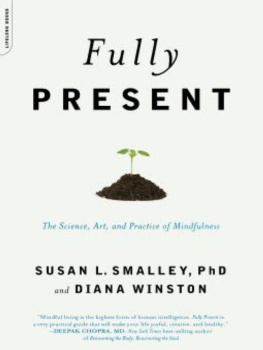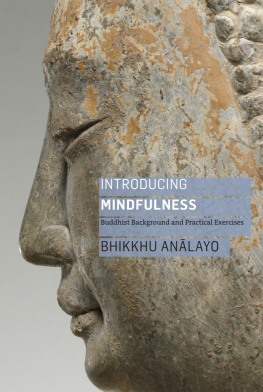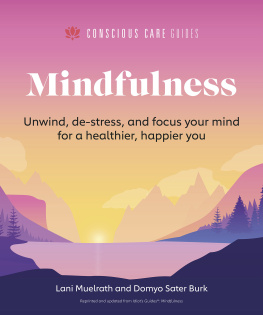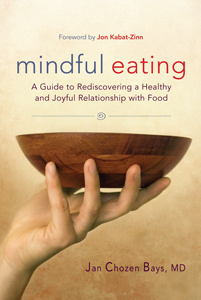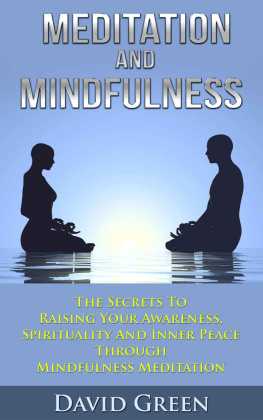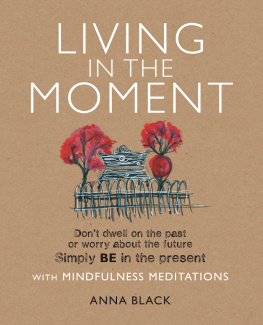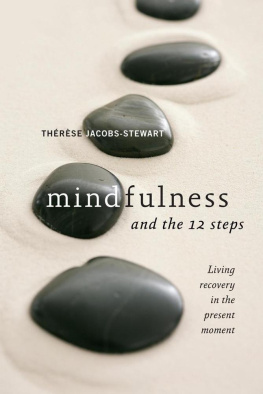Table of Contents
PRAISE FOR FULLY PRESENT :
Beautifully clear, wise, and immensely useful. A perfect guide for professionals and individuals to learn the science and practices that bring the enormous benefit of mindfulness.
Jack Kornfield, best-selling author of A Path with Heart
Fully Present is a fresh and innovative examination of the why and how of the state of consciousness known as mindfulness. It is science based with practical applications. I hope everyone who wants to learn more about both the science and the art of mindfulness will read it.
Tipper Gore, author, photographer, and mental health advocate
This book with exciting up-to-the-minute mindfulness research findings and filled with wonderful vignettes that make it a joy to read can change your school, your clinic, your workplace... your life.
Sylvia Boorstein, author of Happiness Is an Inside Job
This book is a wonderful balance of meditation instruction and scientific discovery, accessible and user friendly. Both beginning and more experienced meditators will find it inspiring and informative.
Sharon Salzberg, author of Lovingkindness: The Revolutionary Art of Happiness ; Co-Founder of the Insight Meditation Society
Fully Present is a wonderful book. It does a great job of presenting the psychological and biological science relevant to understanding and benefiting from mindfulness. Just reading it made me feel better, but I also now have compelling reasons for wanting to pursue mindfulness myself.
Joseph LeDoux, PhD, Director of the Center for the Neuroscience of Fear and Anxiety, New York University; author of The Emotional Brain and The Synaptic Self
Be aware, be very aware! Fully Present will bring you into the current moment and keep you there. A must for any student of life.
Jeff Skoll, Founder and Chairman, Participant Media
Fully Present offers a wonderfully practical introduction to the cultivation of mindfulness and how it can be applied in daily life from childhood on through adulthood. Such practice helps to counteract the disruptive influence of the rapid pace of life and the sensory and information overload that characterize modern life. I heartily recommend this work and hope it will receive the widespread attention it deserves.
B. Alan Wallace, author of The Attention Revolution: Unlocking the Power of the Focused Mind
How to live in these extraordinary times? Do we embrace the exhausting cacophony of a world that never sleeps; or in a desperate search for solitude shutter the windows of the self, risking the blackness of despair? In Fully Present Smalley and Winston offer a middle ground: one where through mindful practice we can each find our own contemplative place and from there the strength to build a clearer personal vision. Melding the science and the art of mindfulness with its daily practice this concise, well-referenced work will stand apart from others as an invaluable compendium.
Peter C. Whybrow, MD, Director of the Semel Institute for
Neuroscience and Human Behavior at UCLA; author of
American Mania: When More Is Not Enough
Fully Present is a highly readable, practical guide to the science and art of mindfulness meditation. For those wishing for a succinct summary of both the scientific evidence and the experiential descriptions along with specific meditation instructions, this book is an ideal place to start.
Richard J. Davidson, William James and Vilas Professor of Psychology and Psychiatry Director, Center for Investigating Health Minds University of Wisconsin-Madison
To everyone with the curiosity to explore their mind and heart using the tool of mindfulness
A human being is a part of the whole, called by us, Universe, a part limited in time and space. He experiences himself, his thoughts and feelings as something separated from the resta kind of optical delusion of his consciousness. This delusion is a kind of prison for us, restricting us to our personal desires and to affection for a few persons nearest to us. Our task must be to free ourselves from this prison by widening our circle of compassion to embrace all living creatures and the whole of nature in its beauty.
ALBERT EINSTEIN
ACKNOWLEDGMENTS
T he authors would like to thank our editor at Da Capo, Rene Sedliar, for her insightful comments; Matthew Lore for bringing the project to Da Capo; our agent, Stephany Evans, who saw how this book might fill an important niche; and our wonderful copy editor, Cynthia Buck.
Thanks to Jim Formanek for creating two illustrations for the book.
We are grateful to the many readers of early versions of the manuscript who provided helpful suggestions: Marvin Belzer, Susan Kaiser Greenland, Lisa Henson, Ellen Meyer, Phillip Moffit, Paula Ravets, Roni Rogers, Olivia Rosewood, Donald Rothberg, and Amita Schmidt.
We would like to thank the scientists and doctors who provided expertise on specific topics in the book: Lori Altshuler, Joan Asarnow, Robert Cloninger, David Creswell, Amishi Jha, Joseph LeDoux, Emeran Mayer, Max Muenke, Judith Piggot, Russell Poldrack, Lobsang Rapgay, and Elizabeth Smalley. Their expertise and that of the other scientists and researchers described in this book were interpreted by us, so any errors in presentation or interpretation of research are ours alone.
Thanks to Lauren Asarnow for her endless hours tracking down references and tending to small details of the book; to Alisha Musicant for her transcription work; and to Jennifer Kitil and Judith Rivero for their administrative support.
We would also like to thank our MARC collaborators and the UCLA faculty and staff who help our center grow: our co-director, Dan Siegel, as well as Shea Cunningham, Lisa Flook, Sigi Hale, Michael Irwin, Emeran Mayer, Bruce Naliboff, Lobsang Rapgay, Jeffrey Schwartz, Cathy Thomas, and Lidia Zylowska. Special thanks to the MSST Foundation for its generous support of MARC and to our institute, the Jane and Terry Semel Institute for Neuroscience and Human Behavior, and its director, Peter Whybrow, for supporting the work of MARC in so many ways from the very beginning.
We would also like to thank Jon Kabat-Zinn, whose programs have had such an influence on our work.
Sue would like to thank her husband, Kevin Wall, and their three children, Patrick, Timothy, and Kelly, from whom she figured out the meaning of life. Special thanks to the friends who help her live a more mindful life, including those in the Book Club and Friday Morning Meditation, among others.
Diana would like to thank her many dharma teachers and her Spirit Rock Teachers Council colleagues, who have deeply influenced her teaching and articulation of mindfulness over the years. She would especially like to bow down before the feet of her husband, Martin Matzinger, who supported her in endless ways through the year of writing. And most love of all to Mira Lucia, who was in utero throughout the books gestation. Both were born around the same time.
INTRODUCTION
An unexamined life is not worth living.
SOCRATES
W hile most of us would agree with Socrates sentiment, how many of us actually know how to examine our life as it unfolds and how to examine it skillfully? Furthermore, how many of us think we have the time to do that? We are immersed in a society of speed, technology, and information overload. Despite extraordinary advances in science and technology, from mapping our genomes to information access via the Internet, we live in an age of increasing anxiety and increasing doubt in our capacity to make decisions and to effect change, whether in our bodies, our lives, or the world around us. Feelings of fear, frustration, stress, and confusion seem to be on the rise globally, and the elevated rates of psychiatric illness among adults and children worldwide probably reflect this rising distress.

